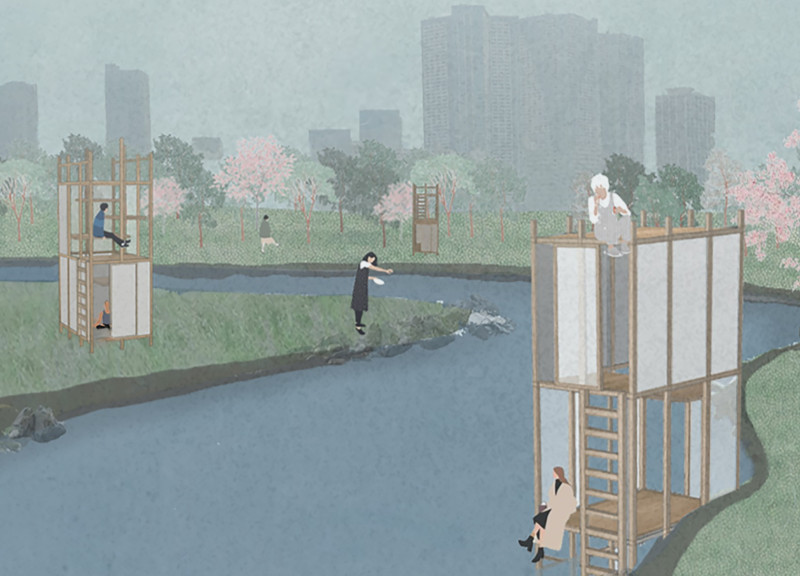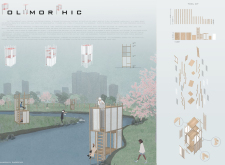5 key facts about this project
The "Polymorphic" design provides a flexible and portable structure intended for meditation and relaxation in outdoor environments. It aims to create a space where users can step away from the noise of the city and engage with nature. The overall design emphasizes adaptability, allowing for diverse experiences that range from personal reflection to social interaction.
Design Concept
The structure consists of three vertical levels, each designed to meet different needs. The ground level is closed and opaque, offering a sanctuary for those seeking solitude and quiet reflection. As users ascend, the upper levels open up, promoting relaxation and a greater connection to the surrounding natural landscape. This gradual transition from enclosure to openness is key to the overall experience.
User Interaction
A multi-level approach encourages occupants to interact with each other as they navigate through the space. This interconnected design fosters a sense of community while still allowing for personal moments of retreat. There is also a reversed configuration option where the enclosed space sits on top, allowing occupants to connect more closely with water elements, enhancing the meditative experience.
Materiality
The materials chosen for this design are wood and rice paper. Both are natural elements that reflect their cultural significance in Japan while also resonating with the environment. The use of traditional joinery techniques, like cross halving and double corner joints, contributes to the structure’s craftsmanship and cultural authenticity.
The design strikes a balance between built space and nature, prioritizing a relationship that enhances the user experience. Transparent spaces and strategic voids allow natural light to flow in, creating a feeling of openness. This integration of structural and natural elements is foundational to the project, providing clear connections between the occupants and their surroundings.



















































